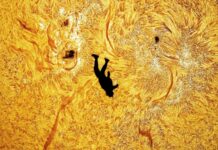Each year, billions of dollars worth of crops are lost globally due to pre-harvest sprouting (PHS), where grains and seeds begin to germinate on the plant before being harvested. Triggered by warm, humid weather, this phenomenon jeopardizes crop quality and contributes to global food security challenges. However, new research, spearheaded by scientists at the Carlsberg Research Laboratory in Denmark, has revealed the genetic mechanism controlling when barley sprouts, potentially offering a solution to this widespread problem.
The Roots of the Problem: Domestication and Dormancy
PHS isn’t a natural occurrence; it’s a consequence of agricultural practices. When early farmers domesticated barley, they prioritized crops that sprouted quickly after planting. This required reducing the natural seed dormancy—a vital pause that prevents sprouting until conditions are ideal. While this practice enables faster planting and potentially two harvests per year, it creates a significant vulnerability: if the weather turns unusually warm and moist before harvest, the entire crop can begin to sprout prematurely. This renders the grain unsuitable for storage or processing, negatively impacting its value for both food and brewing.
Unraveling the Genetic Control: The Role of MKK3
To investigate the causes of PHS, researchers focused on MKK3, a gene already known to influence dormancy in barley and other cereal grains. They conducted a comprehensive analysis of the DNA from over 1,000 barley varieties sourced from farms and seed banks around the world. The study also involved cultivating different barley types in fields over multiple seasons, intentionally subjecting half of the plants to conditions likely to trigger PHS. Through comparative analysis of affected and normal grain, along with laboratory studies examining gene expression and protein activity, researchers were able to determine how MKK3 genes directly impact dormancy.
Multiple Versions of MKK3 Govern Dormancy
The study, published in Science, revealed a critical finding: dormancy isn’t controlled by a single version of the MKK3 gene, but rather by multiple versions. Wild barley possesses only one copy of this gene, whereas domesticated varieties have several. Consequently, the more MKK3 genes a barley plant has, the stronger the signal to sprout, leading to shorter dormancy periods.
Ancient Farming Practices Shaped Genetic Diversity
The researchers also investigated how these different MKK3 variants spread over time, in response to climatic conditions and the needs of ancient farmers. Certain “hyperactive” variants were selected by farmers in Northern Europe, prized for their superior malting qualities. Conversely, other, less active variants, which promote higher dormancy, were favored by farmers in wetter climates, like East Asia, where they helped crops withstand monsoon seasons.
A Future of Climate-Resilient Barley
These insights offer a pathway for modern breeders to develop barley varieties tailored to specific regions and climates. >Our work shows that understanding the genetic complexity of dormancy can help breeders develop barley that is both productive and resilient to climate change. By selectively breeding varieties with appropriate MKK3 variants, farmers can cultivate crops that are both high-yielding and less susceptible to the detrimental effects of pre-harvest sprouting. This research holds significant promise for enhancing global food security and supporting sustainable agricultural practices.




























